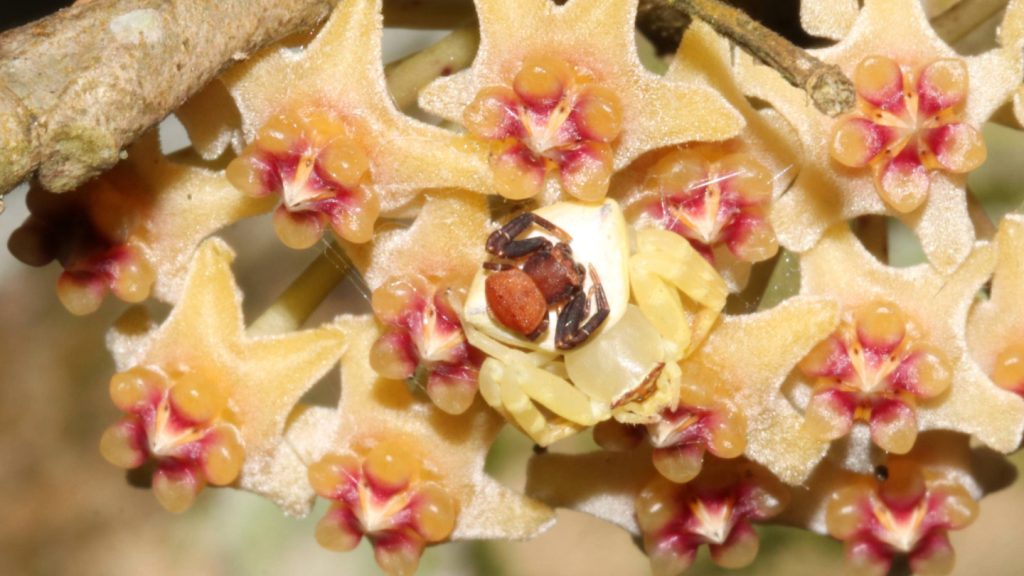Some species of crab spiders have abandoned the traditional web-building strategy in favor of using flowers for camouflage. Female Thomisus guangxicus spiders have perfected the art of blending into flower petals to catch unsuspecting insects while evading predators like wasps, lizards, and birds. In a recent discovery, scientists have observed a male spider joining the female spiders in this illusionary camouflage technique, possibly representing the first-known example of cooperative camouflage among spiders. This finding challenges our understanding of survival strategies in the natural world and highlights the complexity of evolutionary adaptations.
The observation of male crab spiders mimicking pistils and stamens on flowers was made in a tea garden in China’s Yunnan province. The male spider was found lying on top of a larger female crab spider, both blending seamlessly with the flower they were on. This behavior is unusual in spiders, as most species are solitary and only come together briefly for reproduction. This unique observation suggests a level of cooperation and mutual benefit between male and female spiders that is not commonly seen in the animal kingdom, especially among arachnids.
Arachnologist Stano Pekár notes that the behavior of the male crab spiders imitating parts of a flower could be driven by evolutionary pressure. Male spiders need to access the flowers where females spend most of their time to mate successfully. Having a coloration that complements the female’s appearance while camouflaging among the flowers could be a survival advantage, as it helps them avoid predators while seeking potential mates. This joint illusion created by male and female spiders showcases the intricate strategies that have evolved in the natural world to ensure species survival.
Evolutionary ecologist Thomas Sherratt emphasizes the importance of further observations to confirm the significance of this cooperative camouflage behavior in crab spiders. While the initial discovery is intriguing, additional studies are needed to determine if this behavior is consistent and widespread among crab spider populations. Understanding the intricacies of such adaptations can provide valuable insights into the evolutionary dynamics of species interactions and the diverse ways in which organisms have evolved to thrive in their environments.
Shi-Mao Wu and Jiang-Yun Gao’s study, published in Frontiers in Ecology and the Environment, sheds light on the remarkable cooperative behavior exhibited by male and female crab spiders in utilizing flowers for camouflage. This finding challenges traditional views of spider behavior and survival strategies, highlighting the complexity of natural selection and adaptation processes. By studying such unique interactions in nature, scientists can gain a deeper understanding of the multifaceted ways in which organisms have evolved to navigate their ecosystems and ensure their survival in the face of diverse challenges.
In conclusion, the discovery of male crab spiders participating in cooperative camouflage with female spiders on flowers is a fascinating addition to our understanding of animal behavior and survival strategies. The intricate dynamics of these interactions offer valuable insights into the evolutionary processes that have shaped the diversity of life on our planet. Further research into this phenomenon will undoubtedly uncover more mysteries of nature and provide a deeper appreciation for the complex and remarkable adaptations that species have developed to thrive in their environments.















